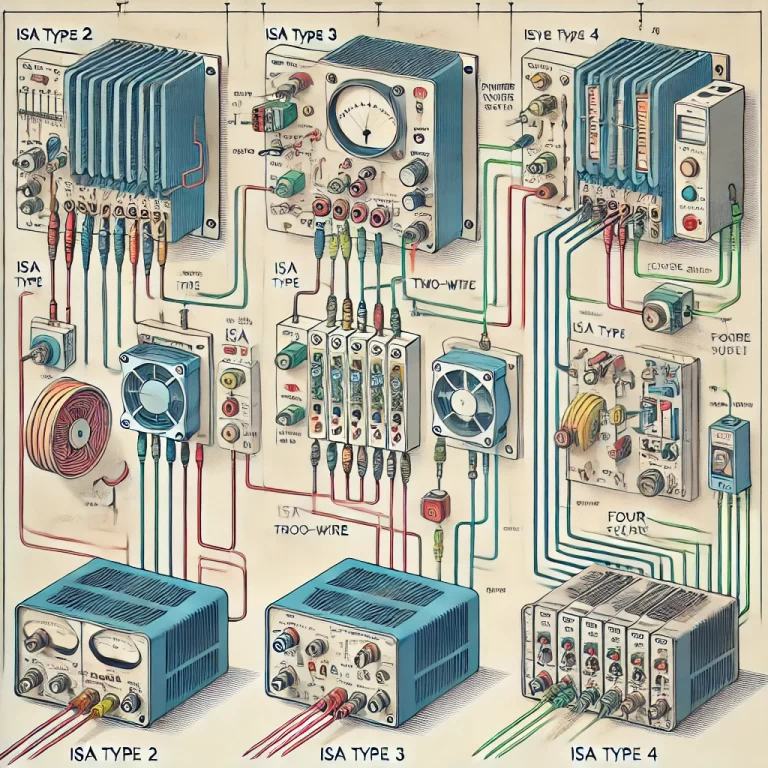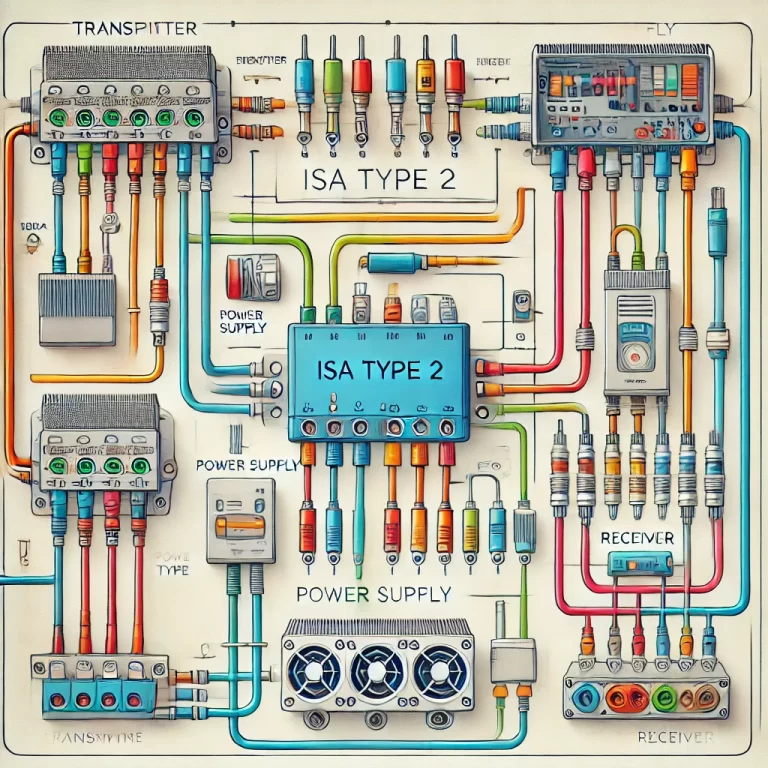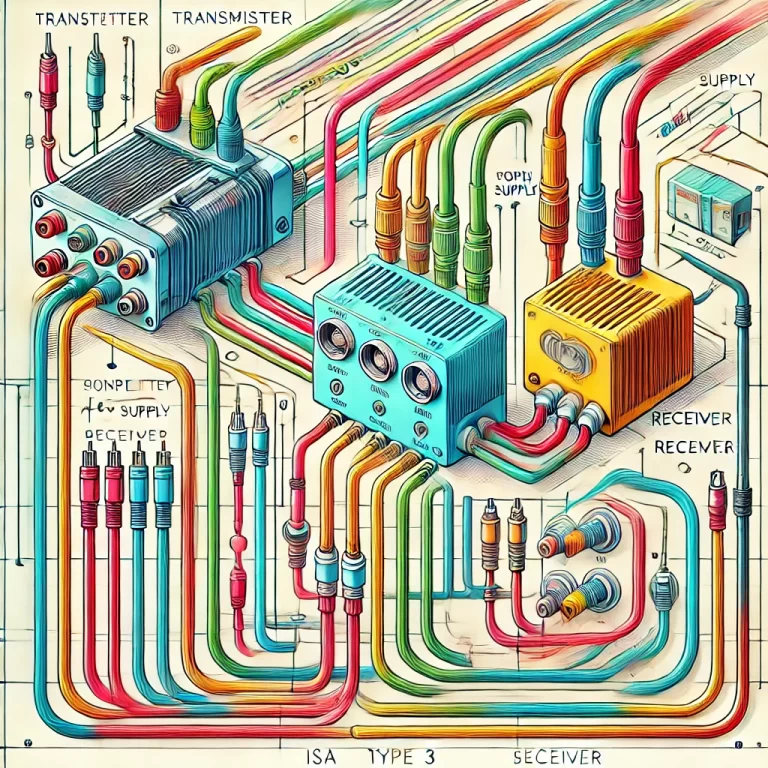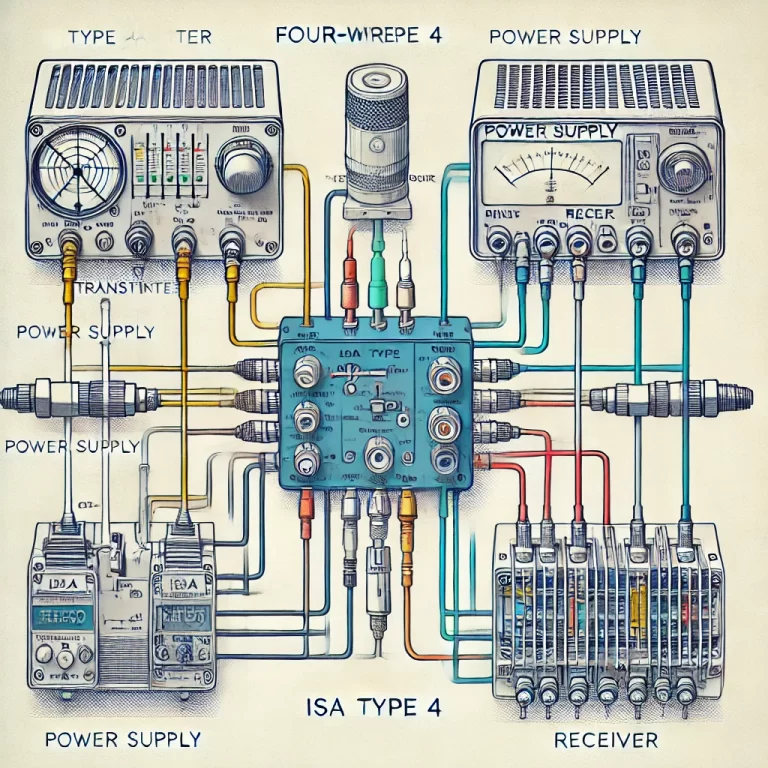Process instruments are devices used in the field of industrial automation to measure and control process variables (such as temperature, pressure, liquid level, flow, etc.).
In process control systems, sensors or transmitters communicate with the control system through electrical signals, and this communication method is usually divided into two-wire, three-wire and four-wire systems. These three wiring methods have their own characteristics and applicable occasions.
This article will explain in detail their working principles, advantages and disadvantages, and application occasions.

2-Wire
2-Wire transmitters use only two wires to transmit power and signals. A common signal type is a 4-20mA current signal, where:
• 4mA: usually indicates a zero signal (lower limit).
• 20mA: indicates a full-scale signal (upper limit).
This current signal simultaneously undertakes the task of power supply and signal transmission for the sensor.
Advantages
1. Simplified wiring: only two wires are required, reducing wiring complexity and cost.
2. High reliability: current signals are not easily affected by cable resistance and long-distance transmission, and have strong anti-interference capabilities.
3. Fault detection: If the current is lower than 4mA, it can usually be judged as a line break or device failure.
Disadvantages
1. Functional limitations: Since the current is used for both power supply and signal, the power of the sensor is limited.
2. Accuracy impact: may be limited by the constraints of the power supply current on the device function.
Applications
The two-wire system is widely used in long-distance transmission and measurement in complex industrial environments, such as temperature, pressure, liquid level and flow measurement in the petrochemical, pharmaceutical and other industries.

Three-wire system (3-Wire)
Three-wire transmitters usually have three wires: one for the positive power supply, one for the signal output, and one for the common ground wire. The common signal type is 0-10V voltage signal.
Advantages
1. High flexibility: suitable for devices that require independent power supply.
2. Wide application range: can be used in many low-power occasions.
Disadvantages
1. Poor anti-interference: voltage signals are easily interfered when transmitted over long distances.
2. Complex wiring: one more wire than the two-wire system, which increases the wiring complexity.
Applications
Three-wire system is often used for short-distance signal transmission in laboratory environments or inside equipment. Due to its weak anti-interference ability, it is not suitable for long-distance transmission.

4-Wire
A 4-wire transmitter uses four wires, two of which are used for power supply (positive and negative) and the other two for signal transmission (positive and negative). This makes the power supply and signal channels completely independent.
Advantages
1. High precision: independent power lines and signal lines reduce the voltage drop effect in signal transmission.
2. Suitable for complex systems: can provide stable power supply for equipment, suitable for complex or demanding measurement environments.
Disadvantages
1. High wiring cost: four wires are required, the wiring is more complicated and the cost is higher.
2. Complex installation: the installation process is more complicated and requires more wiring and management.
Applications
The 4-wire system is suitable for occasions with high precision and high reliability requirements, such as laboratory measurements, high-end industrial control systems, and occasions where isolated power supply is required.

Selection Guide
When choosing the appropriate wiring method, the following factors need to be considered:
1. Transmission distance: Two-wire is preferred for long-distance transmission.
2. Environmental interference: In a high-interference environment, current signals are more stable than voltage signals.
3. Accuracy requirements: In high-precision measurement applications, four-wire is usually a better choice.
4. Installation cost: Consider the cost of wiring and equipment, and choose the appropriate method to balance cost and performance.

Conclusion
Two-wire, three-wire and four-wire systems each have their own advantages and disadvantages and are suitable for different application scenarios.
In practical applications, it is necessary to comprehensively consider factors such as specific process requirements, installation conditions, and cost budget to select the most appropriate signal transmission method.
Through reasonable selection and application, the measurement accuracy and reliability of process instruments can be effectively improved, thereby optimizing the performance of industrial process control systems.
